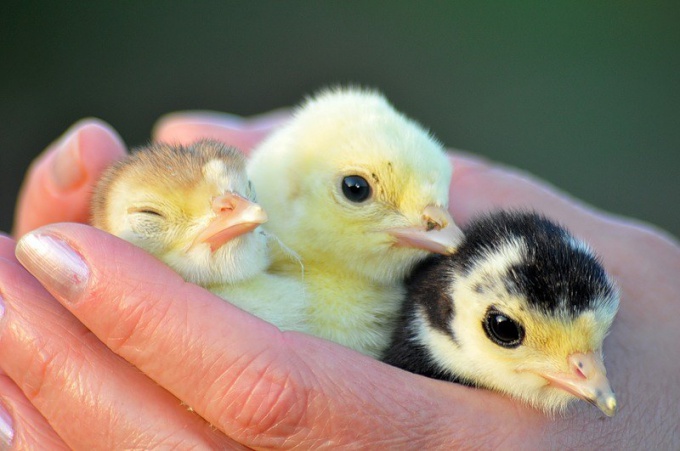Instruction
1
Best of all youngsters to grow up under a hen. Turkey is a very caring mother, they, unlike ducks and chickens don't leave their children. Choose the role of the hen bird large, it can heat a large number of eggs. The nest should be in a secluded spot (in a shaded and warm place), so the other turkeys did not disturb the hen. If Turkey can't get it up, get her up every two days, give her time to walk, eat and emptying the bowels. Inspect the socket, if the litter is wet, replace with dry straw.
2
Poults hatch on day 28, the hen feels it and stops to get out of the nest. The Chicks are well protected with feathers of turkeys from the external environment, receive the necessary heat. After a couple of days the turkeys out from under the hen. Check out all of the eggs under her, bad move, leave the rest to the remaining hatched Chicks. The first five days, the temperature for growing turkeys should be 33-35 degrees, following five days of 30-32 degrees, the third five days – 28-29 degrees, then 26-27 degrees and 24-25. In the future, maintain a temperature of 18-20 degrees. How often to change the litter.
3
The first few days Chicks struggle to find food and water, so place feeders and waterers in well-lit areas. If the litter is in the house, the first days of lighting should be available. Subsequently, the duration of daylight is reduced to seventeen hours. For the prevention of diseases add to the water a weak solution of potassium permanganate.
4
Turkeys require more vitamin and protein foods. Therefore, add the wet mash cheese, meat waste, peas, skim milk, carrots and greens. Let the Chicks boiled and mashed potatoes. The first two weeks feed the turkeys 10-12 times a day, then reduce to 6 times. As the first feed, use fresh yogurt, cheese, eggs. Add corn or barley flour. If Chicks shy away from eating, force feed. Each new type of food it is recommended to introduce gradually, as the Turkey poults are sensitive to change of feed.
